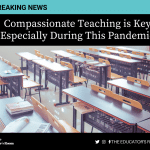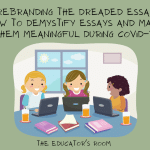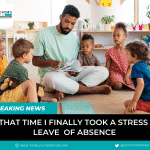Overview:
The college admissions process was already a grueling process, but during COVID-10 students were overwhelmed.
COVID-19 swept the globe in 2020, resulting in the most profound disruption in the history of education through widespread school closures. Although the full extent of its effects continues to be understood, the immediate consequence on student learning was evident as we quickly recognized the shortcomings of remote learning. Studies consistently show the pandemic led to substantial learning loss. A study by McKinsey & Company concluded that “the impact of the pandemic on K–12 student learning was significant, leaving students on average five months behind in mathematics and four months behind in reading by the end of the school year.” While students grappled with the academic challenges of online learning, high school students encountered further difficulties due to the pandemic’s impact on the college admissions process.
Navigating the college admissions process was already a grueling process, but when the pandemic plunged the world into unprecedented circumstances, students were overwhelmed striving to fulfill college admission criteria. Involvement in extracurricular activities was greatly restricted when 93% of households with school-aged children engaged in distance learning. Lockdown regulations limited access to testing sites, leading to SAT/ACT exams being repeatedly canceled. With application deadlines approaching, students found themselves traveling for hours to take their exams. Students encountered household illnesses and financial difficulties, inadequate guidance, delayed communication, limited access to academic support, and various other obstacles. The title of a Time Magazine article put it best: Applying to College Was Never Easy for Most Students. The Pandemic Made It Nearly Impossible.
The Pandemic Effect
Recognizing these difficulties, colleges responded by suspending the SAT/ACT exam requirement and adopting a test-optional or test-blind admission policy. In 2020, nearly 70% of four-year colleges adopted the test-optional policy, including all eight Ivy League schools. This trend has continued, and in 2023, 92% of schools evaluate students using holistic review. The Association of American Medical Colleges describes holistic admissions as a process that evaluates the “whole” applicant beyond exam scores. The University of California lists thirteen factors they consider in holistic admissions. The new admission policies alleviated the mounting stress felt by students, and holistic review has profoundly affected the college admissions process.
Increased Number of Applications
Test-optional policies have long been discussed as questions of economic and racial bias have led many to question the validity of standardized tests like the SAT/ACT. Many colleges adopted test-optional policies prior to the pandemic, but the sweeping change made students more aware, and the number of applicants skyrocketed. Inside Higher Education cites a study by Maguire and Associates on the impact of test-optional policies in college admissions and found the application volume at public universities rose 55% while private universities rose 48%.
Test-optional policies have especially impacted the number of students applying to Ivy League schools. Harvard University saw a significant increase in applicants, from 40,428 in 2020 to 612,221 applicants in 2022. Top Tier Admissions, a college consulting company, shares staggering statistics on the rise in applicants to Ivy League Schools and their admission rates in the last decade.
Increased Diversity
Test-optional policies improve the diversity of applicants by removing barriers to admission. The same study by Maguire and Associates found that in addition to the rise of applicants to four-year schools, the number of applicants from historically underrepresented student populations increased by 56% at public universities and 45% at private institutions. Universities report increases in student applicants with varying economic and ethnic backgrounds and first-generation students. The University of California announced that it admitted “its largest, most diverse undergraduate class ever for fall 2021.” FairTest Executive Harry Feder said, “Admissions offices increasingly recognize that test requirements, given their negative disparate impact on Black and Latinx applicants, are ‘race-conscious’ factors, which can create unfair barriers to access higher education.” A survey published by the Education Advisory Board further showed that “test-optional admissions policies have had significant DEI impacts on college application activity.”
Conflicting Effects
The surge in college applications among students is promising, yet it has also brought conflicting effects. As colleges receive more applicants, their capacity stays the same, resulting in admissions becoming increasingly more competitive. High-achieving students once thought to be competitive at top-tier schools, suddenly faced rejection as merit-based scores lost value. Holistic review places a greater emphasis on other aspects of the college application than GPA, class rank, and test scores.
As students look for ways to stand out in college admissions beyond merit-based scores, families are seeking help. According to the Independent Educational Consultants Association, the number of students hiring college admissions consultants has tripled, and a survey of students showed over a quarter of them opted for such services. A study by Stanford University also found a correlation between essay content, SAT scores, and household income. This again raises concerns about equity and whether income is correlated with college admissions. The subjective nature of holistic admissions has also raised questions about the use of race as a consideration and whether this violates the equal protection clause. In June 2023, the Supreme Court rejected the use of race-conscious admissions, leaving universities questioning how to promote diversity.
The Supreme Court decision against Harvard University and the University of North Carolina at Chapel Hill carries significant weight and questions whether holistic review is too great a liability for universities. The timing of this decision is noteworthy, given colleges were already discussing whether test-optional admissions were a temporary measure in response to the pandemic’s effects or if they offer lasting advantages. There has not been an “emerging consensus on standardized testing policies” amongst colleges resulting in a “policy smorgasbord.”
The State of College Admissions
According to the New York Times, “Research has increasingly shown that standardized test scores contain real information, helping to predict college grades, chances of graduation and post-college success. Test scores are more reliable than high school grades, partly because of grade inflation in recent years.” Given these factors and the impact of test-optional admissions, top-tier schools, including MIT, Georgetown, and Purdue, reinstated testing requirements in 2022, and other colleges are now following suit.
In February 2024, Dartmouth became the first Ivy League school to announce its reinstatement of test score requirements for admission, followed shortly thereafter by Yale, the second Ivy League school to make the same decision. But other universities, including Cornell, Harvard, and Vanderbilt, have extended test-optional admissions for one to three years. Inside Higher Education purports, “Many large public institutions are also playing the waiting game” as they watch the decisions made by other universities. Additionally, according to Michael Bastedo, an education professor at Michigan and founding director of the Michigan Admissions Collaboratory, “most institutions want more time to collect data and make an informed decision.”
The impact of the pandemic on education continues to be a challenge. Learning loss impacted all students and eradicated strides made in closing the achievement gap. Additionally, the pandemic led to changes in college admissions, opening the door of opportunity to many students but closing the door to others. As science tells us, for every action, there is an equal and opposite reaction, and the world of college admissions has shown this to be true. Although test-optional policies removed barriers for many historically marginalized communities, they inadvertently created new inequities and conflicting effects, leaving students in a state of uncertainty. The world is now eagerly waiting to see what colleges will do next and which institutions will continue using test-optional admission policies.

Dr. Laura Ragsdale-Villaflor has over twenty years of experience in schools throughout the Greater Houston Area and has been recognized for her outstanding contributions and excellence in education. She earned her Doctorate from Texas A&M and studied the impact of institutional inequities on the academic achievement of students of color. She also holds a master’s degree in Educational Leadership from the University of Houston and a Bachelor’s in political science from the University of Texas at Austin. Alongside her roles in education, she is an Educational Consultant, serves on multiple boards, including the Education Committee for Greater Houston Partnerships, and is a devoted mom.






